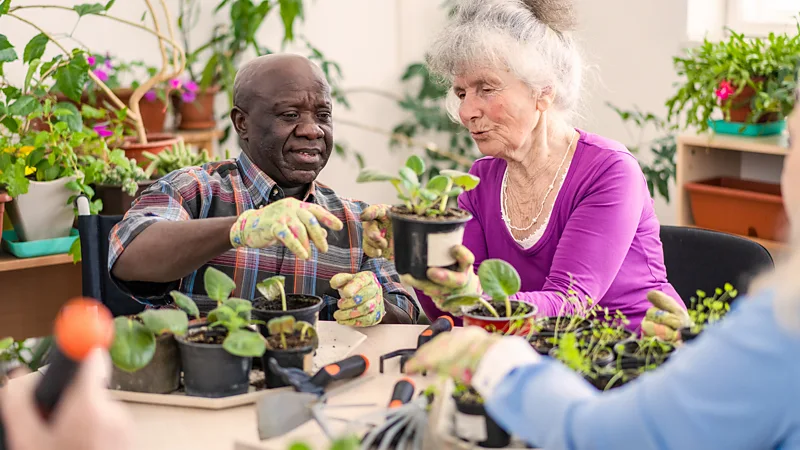How the Michelangelo Phenomenon can shape or break a relationship
The Michelangelo Phenomenon is a fascinating psychological concept that likens the dynamic between partners to that of a sculptor and their art.

There is no denying that relationships have evolved over a period of time, which means the kind of relationship you share with your partner was not exactly how your grandparents did. But one thing has been persistent – an ideal relationship (not that there is any, but you get it, right?) is one where partners help shape each other into their best selves. That’s basically the crux of the Michelangelo Phenomenon.
This is a fascinating psychological concept that likens the dynamic between partners to that of a sculptor and their art. Just as the iconic Renaissance artist Michelangelo believed his sculptures were already present within the marble, waiting to be revealed, this phenomenon suggests that in a healthy relationship, partners "sculpt" each other by encouraging traits and aspirations that align with their ideal selves.
But is this always a harmonious process, or can the chisel sometimes strike too hard?
What is the Michelangelo Phenomenon?
"The phenomenon is about partners helping each other grow into their truest versions," explains Absy Sam, a counselling psychologist from Mumbai. "By supporting each other’s values, goals, and virtues, they chip away the unnecessary parts, revealing the best version of themselves."
The concept aligns with Self-Determination Theory (SDT), where people flourish when their autonomy, competence, and intrinsic goals are supported. In the context of relationships, Delhi-based relationship counsellor Ruchi Ruuh highlights how partners act as sculptors. "They affirm traits and behaviours that align with their partner’s ideal self-concept, fostering trust, shared goals, and emotional intimacy," she says.
Why it works
The Michelangelo Phenomenon thrives on mutual encouragement, building emotional intimacy and resilience. When both partners feel supported, they’re more likely to achieve personal growth. "This emotional safety allows them to explore aspirations without fear of judgment or abandonment," adds Ruuh.
Even in long-distance relationships, the phenomenon’s principles apply. As Sam puts it, "Strong communication is key to keeping the effect alive. It’s a reminder that growth and connection transcend physical boundaries."
Additionally, research on relational dynamics highlights that when couples invest in each other’s personal development, they experience higher levels of satisfaction and stability. Supporting a partner’s growth fosters a cycle of positivity that reinforces the emotional foundation of the relationship. Moreover, the shared pursuit of personal goals can strengthen the couple’s bond by creating common narratives and achievements.
The cultural lens
In India, the phenomenon intersects with cultural expectations and familial roles. "India’s plurality comes with societal norms that can be challenging," explains Sam. "When you’re talking about the Indian aspect, or let’s say the cultural aspect, in India, this can work very well. But as India is full of pluralities, we do come with a lot of cultural expectations. No matter where you belong or what kind of families or roles you have, we always have some set of expectations from society,” explains Sam.
Ruuh echoes this sentiment, emphasizing the potential for positive applications beyond romance. "This approach isn’t limited to romantic relationships. It works in friendships, family dynamics, and even professional setups."
When can things go awry
However, the sculptor’s chisel can sometimes slip. "When one partner imposes their vision of the ‘ideal self’ onto the other, it can lead to resentment," warns Ruuh. Over time, this dynamic may create role strain or internal conflict.
Sam points out another risk: "There’s a chance one might lose their real self trying to meet their partner’s expectations." The imbalance can lead to dependency, emotional distance, or unintentional reinforcement of harmful behaviours.
To prevent such pitfalls, Ruuh advises boundaries and mutual respect. "It’s essential that both partners feel like equal contributors in this process. Otherwise, the sculptor might feel overburdened or inadequate."
Takeaway
The essence of a relationship, whether it’s marriage or friendship, often hinges on compatibility. While that’s undoubtedly important, interpersonal growth is equally crucial. Stagnancy isn’t something people accept easily—if you don’t grow and your partner or friend doesn’t support that growth, it could strain the relationship. On the flip side, overdoing it by imposing your vision on others can also create problems. So, the key is balance and, most importantly, listening!
Source: India Today
























































